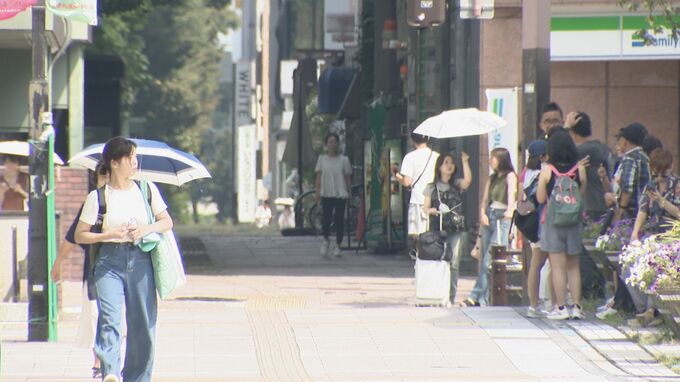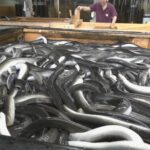The predicted maximum temperature for the 24th is expected to reach 37 degrees in Nagoya and 38 degrees in Gifu, with many areas experiencing extreme heat. A heatstroke alert has been issued for Aichi and Mie prefectures.
In Nagoya, the temperature exceeded 30 degrees before 8 a.m., bringing intense heat from the morning.
The forecasted high is 38 degrees in Gifu City and 37 degrees in Nagoya City. Temperatures are expected to rise to 36 degrees in Takayama City, Gifu Prefecture, and Iga City, Mie Prefecture. In Nagoya and Gifu, this would mark the 10th consecutive day of extreme heat, indicating that the high temperatures will persist even into late August.
A heatstroke alert is in effect for Aichi and Mie prefectures. Authorities are urging people to stay hydrated, replenish salts, use air conditioning indoors, and take precautions against heatstroke.
Over the next week, many regions are expected to continue experiencing extreme heat, with intense late-summer conditions forecast to persist.
Nagoya
Nagoya is a major Japanese city in the Chūbu region, historically founded as a castle town in 1610 by the Tokugawa shogunate. It is now a modern industrial and economic hub, best known as the home of the Toyota Motor Corporation and for its reconstructed Nagoya Castle, a famous national treasure.
Gifu
Gifu is a historic city in central Japan, known for its role during the Sengoku period when it was ruled by the powerful daimyō Oda Nobunaga, who renamed it from Inokuchi in 1567. The city is famously overlooked by Gifu Castle, perched atop Mount Kinka, and is renowned for its traditional cormorant fishing (ukai) on the Nagara River, a practice that has continued for over 1,300 years.
Aichi
Aichi is a prefecture in central Japan, best known as the home of Toyota Motor Corporation and the historic Nagoya Castle, which was originally constructed in the early Edo period. The region has a rich industrial and cultural heritage, playing a significant role in Japan’s manufacturing and samurai history.
Mie
Mie is a prefecture in Japan’s Kansai region, historically known as the home of the Ise Grand Shrine, one of Shinto’s most sacred sites. The area has a long history tied to worship, pilgrimage, and traditional industries like pearl cultivation.
Gifu City
Gifu City, located in central Japan, is a historic city that served as a powerful base for the warlord Oda Nobunaga in the 16th century. It is renowned for its traditional cormorant fishing (ukai) on the Nagara River, a practice that has continued for over 1,300 years. The city is also dominated by Mount Kinka and the historic Gifu Castle, which overlooks the surrounding area.
Nagoya City
Nagoya is a major Japanese city and the capital of Aichi Prefecture, with its history deeply rooted in the powerful Owari Tokugawa samurai clan. Its most famous historic landmark is Nagoya Castle, which was built in the early 17th century and served as a key strategic seat of power. Today, the city is a modern economic hub renowned for its manufacturing, including the automotive and aviation industries.
Takayama City
Takayama City, located in the mountainous Hida region of Gifu Prefecture, is a historic city known for its beautifully preserved old town dating to the Edo Period (1603-1868). It flourished as a wealthy merchant town due to its high-quality timber and skilled carpentry, and its unique culture is celebrated through famous festivals like the Takayama Matsuri.
Iga City
Iga City, located in Mie Prefecture, Japan, is historically renowned as one of the two most famous birthplaces of the ninja, along with Kōka. It was home to the Iga school of ninjutsu and served as the base for the Iga-ryū, a prominent group of mercenary spies and guerilla warriors active during the Sengoku period. Today, the city preserves this legacy through its Iga-ryū Ninja Museum, which features a ninja house with trick doors and demonstrations of traditional weapons.






